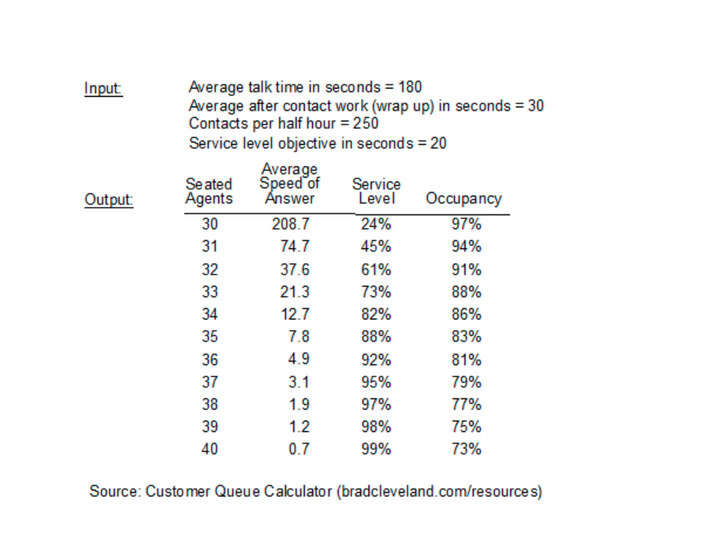By
Brad Cleveland
|
Date Published: February 21, 2023 - Last Updated July 12, 2023
|
Comments
I know, I know. It’s busy out there.
The demand for agent-assisted service is relentless (wasn’t that AI-driven chatbot going to reduce workload?). Your team is juggling customer workload across channels—phone, chat, social media, et al.—and it feels a bit like playing whack-a-mole. Forecasts aren’t as accurate as they could be, and the unknowns driving the work are, well, unknown. Keeping everyone up to date on service and policy changes is a challenge—and a drain on the capacity you thought you had.
So, while you’re waiting for the promises of ChatGPT to materialize—can your agents get just a bit more done? For example, can they stay up to date on those memos and that internal email in between customer contacts? Let’s take a look.
Let’s begin with the definition of occupancy. Occupancy is the percentage of time during an interval that agents who are signed in are actually handling contacts. The inverse of occupancy is the time that agents are waiting to handle contacts.
So, to cook up an example for a group of a few dozen agents (see table), a middle-of-the-road service level of about 80 percent of contacts answered in 20 seconds (82/20 here) equates to an occupancy of 86 percent for that workload. If service level drops to 24 percent answered in 20 seconds, occupancy goes up to 97 percent (see below, right)).

The relationship between occupancy and service level is often misunderstood. The incorrect logic goes something like, “If agents really dig in, service level will go up, and so will their occupancy.” In reality, if occupancy is high, it’s because agents are working on one contact after another, with little or no wait for them to arrive. Contacts are stacked up in queue, and service level is low. In the worst scenario, occupancy is 100 percent because all customers spend at least some time in the queue, and agents have no breathing room between contacts.
Occupancy is driven by random contact arrival and is heavily influenced by service level and group size. Managers don’t exactly love this principle—no one wants “unproductive” time baked into the process. However, the time that agents spend waiting for contacts is sliced into 12 seconds here, two seconds there, and so on, and is a factor of how contacts arrive.
(And yes, if you’ve been in one of those seats handling contacts, those little breathers count. The research says when occupancy is above the low 90% range for extended periods, agents begin to burn out.)
In many centers, agents handle other types of work when the inbound workload slows down. Blended environments (where agents take different types of work based on workload requirements) make sense—no one has a perfect forecast, so schedules don’t always match staff to the workload.
But understand what is really happening. When other work is getting done, either: a) you have more agents scheduled than necessary to handle the workload at your service level goal, or b) the service level is being sacrificed. Don’t try to force occupancy higher through non-contact work than what base staff calculations predict it should be.
As a rule, successful blended environments don’t switch agents from one type of work to another minute-by-minute; that’s simply too hard for any person to juggle and, quite honestly, is very inefficient. These blended environments do, however, make the switch for larger blocks of time: a few hours of this and a few hours of that.
Here’s my advice:
- Don’t expect your team to get things done between contacts on a moment-to-moment basis—not unless you have more people than you need to meet your service level objectives.
- The real opportunity is in larger blocks of time, where workloads predictably ebb and flow. Those are windows you can leverage for keeping up with internal work and other responsibilities.
- Be intentional. If you want something to get done—work of any kind, coaching, training, development, or anything else—you’ll want to account for it in workforce planning. Good forecasts, schedules, and a realistic approach to all activities will optimize results. And keep everyone sane